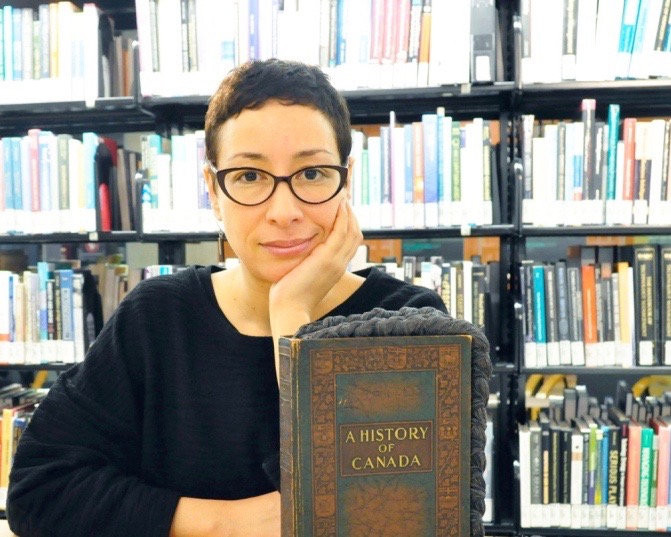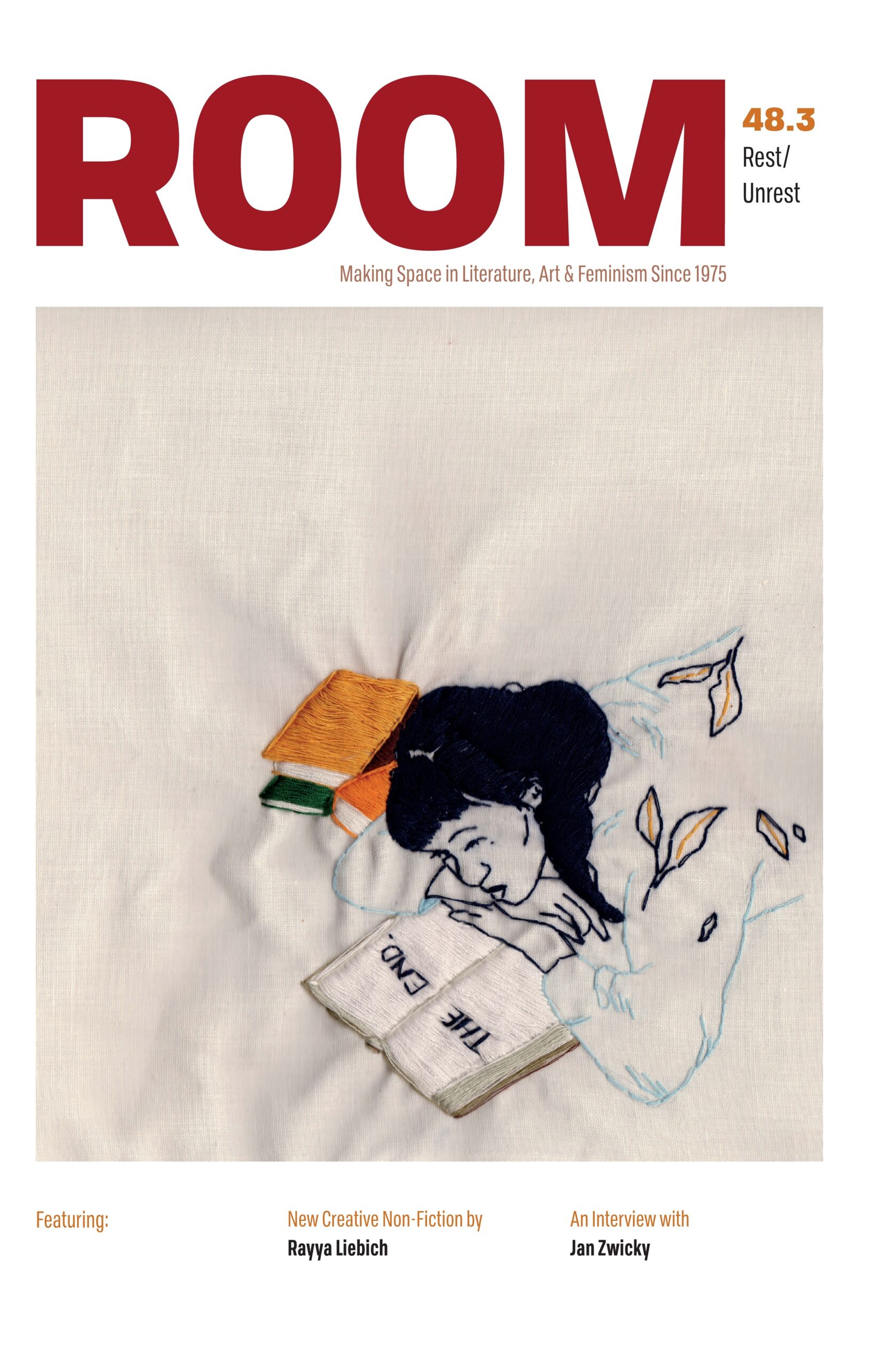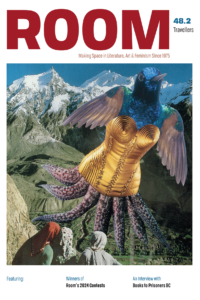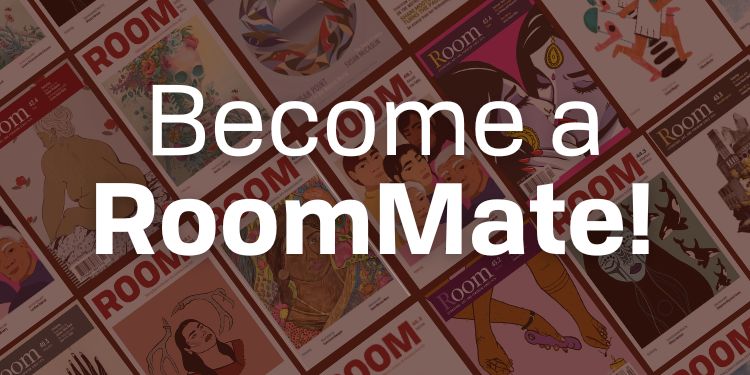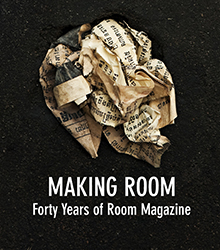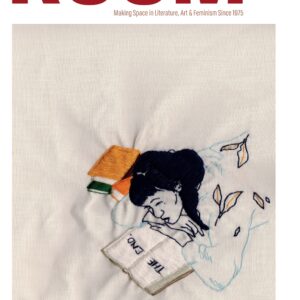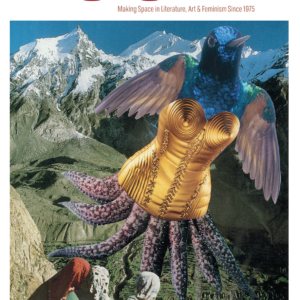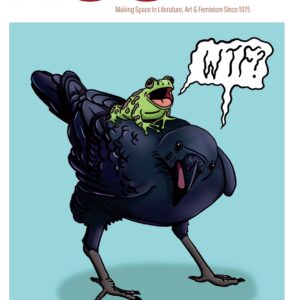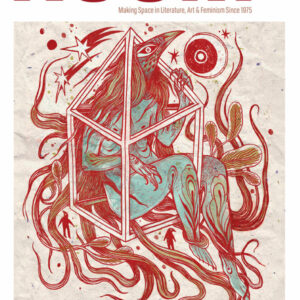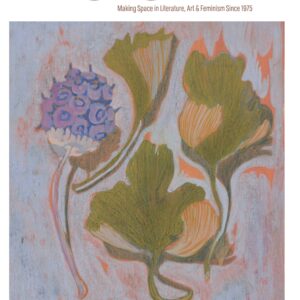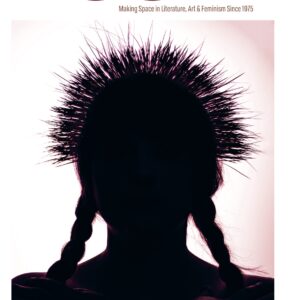A series in which Isabella is excited about everything that is happening at Growing Room 2019, so she sat down with some festival authors to hear about their work, and what events they are most excited to take part in.
A series in which Isabella is excited about everything that is happening at Growing Room 2019, so she sat down with some festival authors to hear about their work, and what events they are most excited to take part in. Learn more about the 2019 Growing Room festival by visiting our website, festival.roommagazine.com.
Chantal Gibson is an artist-educator interested in the cultural (re)production of knowledge. She teaches writing & design in the School of Interactive Arts & Technology at SFU.
ROOM: Hello, Chantal, I’m so glad to be joining you in this space. First off, your book, How She Read, came out in late January with Caitlin Press. Your first collection of poems! Congratulations! How does it feel?
CG: Thank you, Isabella. It has been a very exciting month for me. The book was mentioned on CBC’s poetry list for spring, so that’s awesome. Last week I read the title poem, “How She Read,” live on On the Coast with Gloria Macarenko. And now, I’m in Victoria doing a residency at Open Space Gallery. I keep seeing the image from the book cover, my mother’s first grade photo, pasted on street poles and posted in bookstores. It’s a bit surreal, yet very, very special.
ROOM: I understand How She Read is about the representation of Black women in Canadian art, literature and popular culture. As well, it’s about your process in decolonizing your own voice. This collection of genre-bending poems serves as a commentary on how cultural knowledge is produced. Can you talk about the process? How did this project come to be?
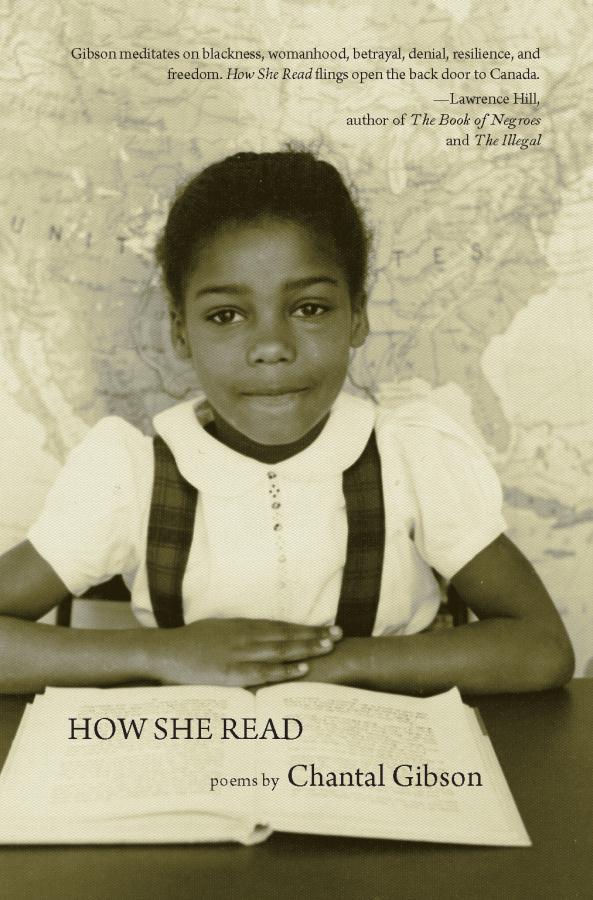 CG: Yes. I’m interested in how knowledge is produced and re-produced, how it becomes naturalized and woven into the fabric of Canadian culture. So, you will see ideas from language experiments introduced in the first section “the grammar of loss” woven throughout the rest of the book, to unsettle the tropes, myths, and stereotypes in the images of the Black women I write about.
CG: Yes. I’m interested in how knowledge is produced and re-produced, how it becomes naturalized and woven into the fabric of Canadian culture. So, you will see ideas from language experiments introduced in the first section “the grammar of loss” woven throughout the rest of the book, to unsettle the tropes, myths, and stereotypes in the images of the Black women I write about.
As for process? One thing I did was ‘loosen my tongue.’ I borrowed that idea from an Audre Lorde poem. I examined common English grammar rules, the dos and don’ts I learned as a kid in grade school and as an undergrad—ideas I continue to replicate and perpetuate in the margins of my students’ papers. Run on sentences, dangling modifiers, split infinitives, passive voice, the stuff of writing handbooks, I asked myself how I might use these ‘errors’ and ‘mistakes’ as a constraint for writing, as a way of fragmenting the colonial language I use every day as a good, literate citizen. I was taught to write in complete and in coherent sentences to avoid confusing the reader, but there are some things that cannot be articulated in words, in complete thoughts—such as memories, pain or trauma. The incoherence and incompleteness became the material and the message of the poems.
Another thing I did was play with ekphrasis. There are several portraits of Black women and girls, written and photographic, in my book. Instead of describing the women, their portraits and the problems with their representation in Canadian art, history, lit and pop culture, I created persona poems and imagined them—Harriet Tubman, Marie-Joseph Angelique, Viola Desmond—talking freely about the use and misuse of their images. Sometimes they talk to the reader, sometimes they talk to authority, and sometimes they talk to each other—there’s a lot of sass and backtalk talk going on in those pages.
ROOM: I have no doubt that your book will resonate deeply with readers. But tell me, what do you hope for your audience to take away from it? What conversations do you hope to raise from it?
CG: On one level, How She Read is a book about Black women for Black women. It’s about literacy and love. It’s a book I wish my mother had when she was growing up in 1950s Halifax. It’s a book I wish I had in university. It’s a book for every Black girl who feels alone in her skin, in her city and her classroom.
But How She Read is also a book for readers. Books, good books, help us become better, more empathetic citizens. We can all become better readers, better viewers, better audiences. That means being interested in voices other than our own. That means being open to new and different ways of learning and knowing and challenging ourselves and our cultural institutions to listen to narratives that may be unsettling and unfamiliar.
I am in the on-going process of decolonizing my thinking—that makes me feel very uncomfortable at times, so, right now, I’m sitting still in the discomfort and listening to the Intersectional, Indigenous and LGBTQ2 voices that are informing my life and my work.
ROOM: This isn’t the first time that you are participating in Growing Room. In fact, you’ve been with us ever since year one! How does it feel to be coming back for the third time? Tell me about the different roles you’ve had over the years, and about how you’ve seen the festival grow.
CG: First off, congratulations to the Room and the Growing Room team. I am so impressed with how much the festival has grown in three years! The first year, the festival included a small art gallery where I did an interactive altered book installation. Last year, I participated on an “Image and Word” panel and facilitated a graphic poetry workshop—with pens and pencils, paper and scissors and glue sticks! This year I’m a contributing author on two amazing panels.
I appreciate how the festival has grown in size and scope—just look at the number of authors and sessions, the diversity of voices and artistic perspectives and expressions, and the increase of locations. Growing Room has expanded genrely, genderly (those aren’t real words are they?) and geographically. As an audience member I am grateful for the attention to and inclusion of diverse voices. I’m know I’m going to learn a lot.
ROOM: This is not the first time we’ve met, actually. Last spring, I attended the SFU Dean’s Lecture series, where I had the pleasure of seeing you in conversation with Lawrence Hill. You referred to Larry as both a friend and mentor, and shared with us your mixed-media art piece, Book/mark, which was inspired by his book, The Book of Negroes. Since then, I’ve heard about your many other art installations, including Historical In(ter)ventions, where you alter Canadian textbooks as a way of drawing out other knotted/underlying meanings and intentions behind them. Would you like to tell us more about your work as a multi-media artist and some of your favourite pieces?
CG: Oh, the Lawrence Hill gig was amazing! I smile every time I think about it. We corresponded for a few months while he was writing in Yukon, so I could learn about him, beyond his incredible body of work, and generate the interview material organically. He was very open to the process and, as you could see, he was a very generous guest.
As for my artwork, I’m really interested in the overlap between writing and visual art. I have a literary-art show on right now at Open Space in Victoria called How She Read: Confronting the Romance of Empire. The show takes moments from my poems and presents them as giant reprints from old children’s grade school spellers and Historical In(ter)ventions–the black-threaded, altered history book sculptures you mentioned. The collection of threaded books and redacted posters challenges how we write and how we read history and nationhood. I’m asking viewers to consider these texts from a young Black girl’s perspective and to imagine the voices, stories, and bodies that have been erased or excluded from dominant historical narratives.
As for a favorite piece? That has to be Souvenir, a large, multi-media installation I created in 2018 for the ROM exhibit Here We Are Here, Black Canadian Contemporary Art. It’s made up of 2000 black, hanging souvenir spoons. The show went to the Beaux Arts in Montreal last fall—my work was right next to Picasso’s—and it’s heading to the Art Gallery of Nova Scotia this spring. This piece is special because I made it while writing How She Read. It inspired a poem called “The Black Wench Suite.”
ROOM: We have you featuring in the panel, “The Writing on the Wall: Storytelling in Visual Art,” as well as “Black Voices Raised“, the anthology launch of Black Writers Matter. But tell me, what are some other events that you are most keen on attending?
CG: Oh, there’s so much I want to take in. I am looking forward to taking time to sit still for Indigenous Brilliance. I want to participate in On and Hazel’s chapbook making workshop. And I am looking forward to hearing Canisia Lubrin’s keynote talk. She edited How She Read. I bought my tickets right away!
Thanks for talking with me, Isabella!
ROOM: Thanks for taking the time to sit down with me, Chantal. I’m so excited to have you for Growing Room 2019!
